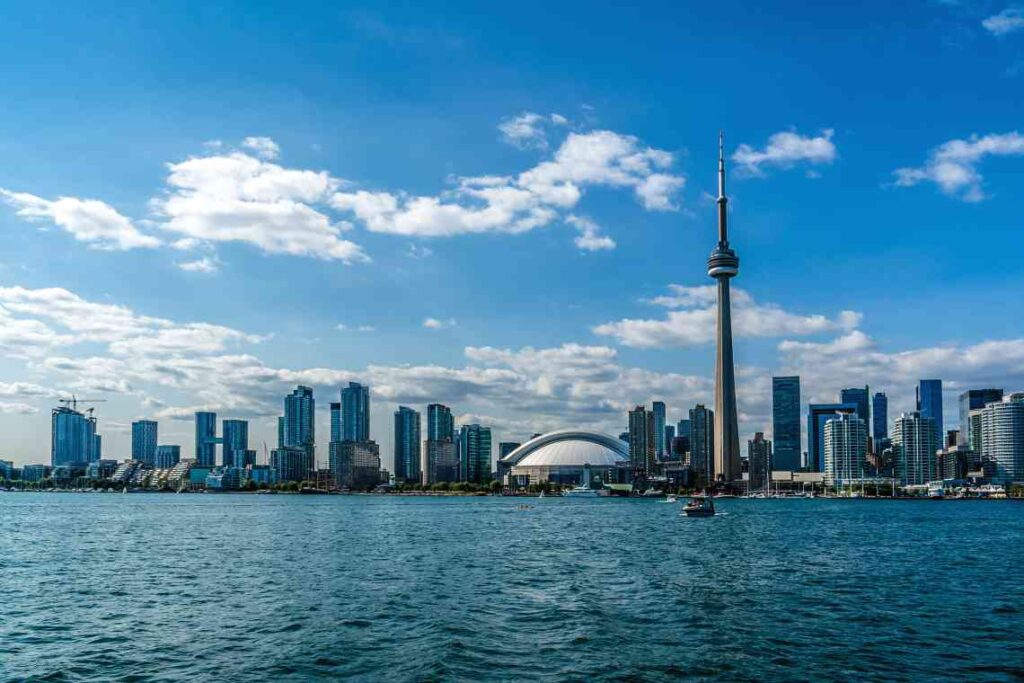If you need some relaxation by the water, or simply want a scenic hiking destination, there is no shortage of lakes in Canada to fit the bill. The country is full of mountain lakes, freshwater lakes, lakes with unique mineral deposits that turn them interesting colors, and even Great Lakes. Plan your next vacation or hike using our guide, and enjoy the scenery. You can even take a dip if you like!
- Emerald Lake
- Abraham Lake
- Moraine Lake
- Garibaldi Lake
- Lake Superior
- Berg Lake
- Kluane Lake
- Spotted Lake
- Lake Louise
- Lake Ontario
Emerald Lake
You can find this crystalline lake in Yoho National Park, located in far eastern British Columbia just west of Banff National Park. People come here not only for the emerald color of the lake, but also for great views of the Canadian Rockies that frame it. Like other lakes on our list, Emerald Lake gets its color from rock flour in melting glaciers. The emerald color is most pronounced in the summer because of this. You can access the lake, which is just off the Trans-Canada Highway, all year to go hiking, canoeing, snowshoeing and cross-country skiing.
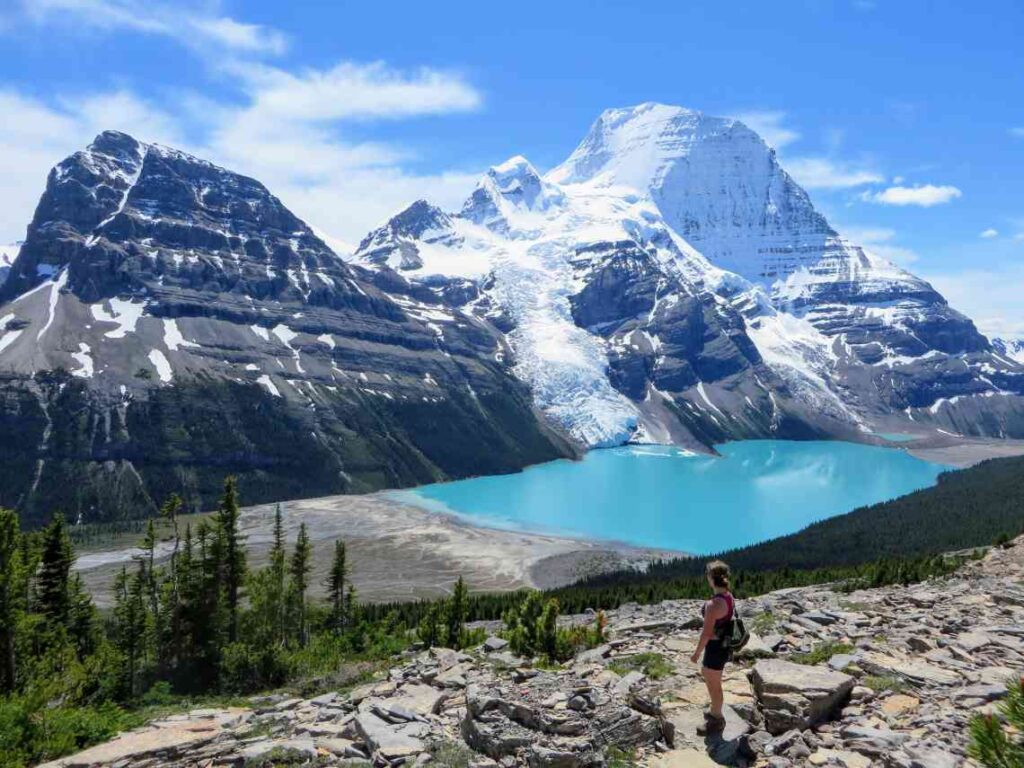
Abraham Lake
Now we head to Alberta to Abraham Lake, an artificially made reservoir known for a distinctive feature. When the lake begins to freeze, stacks of bubbles caused by methane are trapped below the surface of the blue water and frozen in place. It’s worth a trip here during other parts of the year, but if you’re a photographer it would be a good idea to time a visit with when the lake is at least partly frozen to see this phenomenon in person.
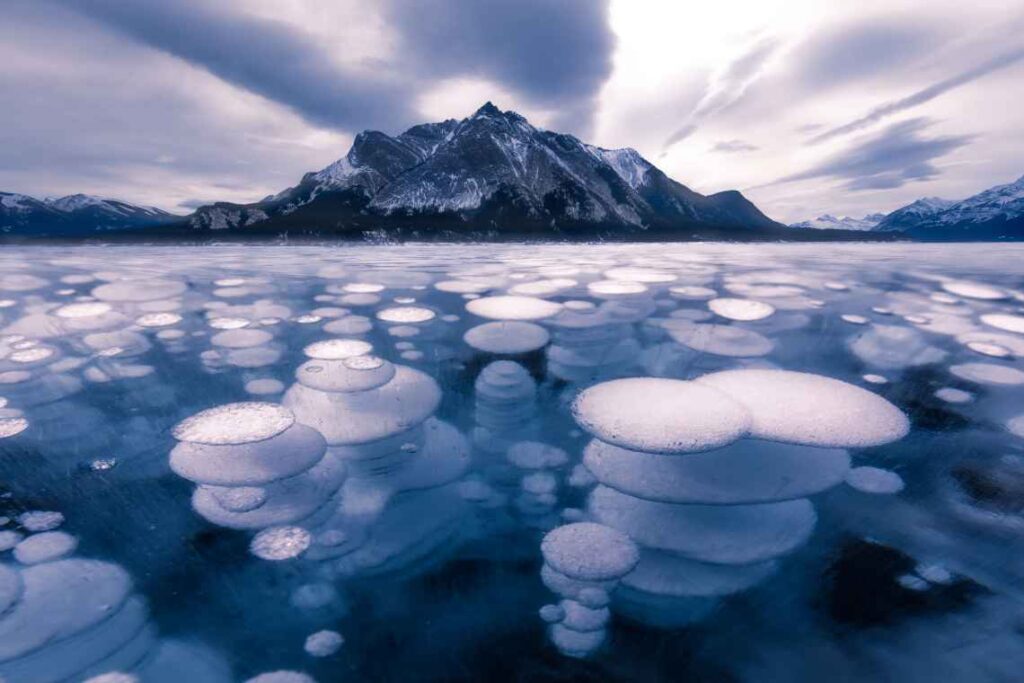
Moraine Lake
This stunning alpine lake has a vivid turquoise color that deepens as it fills with melting glacial water in the summer. The lake is found in the Valley of the Ten Peaks in Alberta’s Banff National Park. You can go for walks or more strenuous hikes around the lake and enjoy the mountain views and waterfalls. You can also go kayaking or canoeing on the lake. It’s easy to access the lake in the summer months, either by car or park shuttle. The road to the lake is closed from mid-October to late May because of avalanche risk.
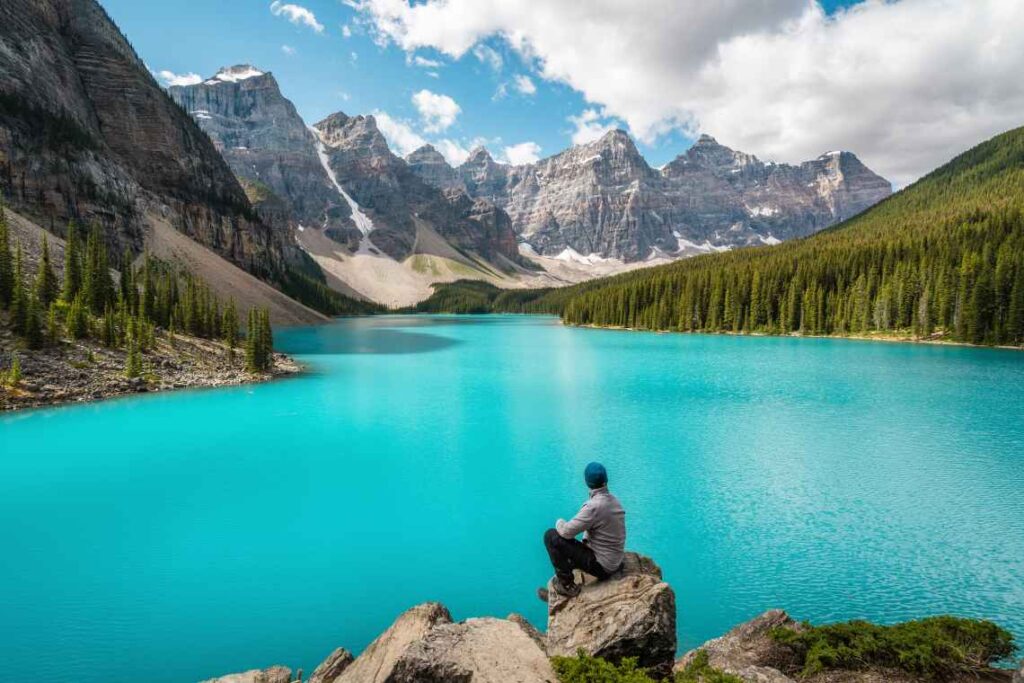
Garibaldi Lake
Head to Garibaldi Provincial Park, south of Whistler, British Columbia and just a 1.5-hour drive from Vancouver, to hike to Garibaldi Lake. It’s another alpine lake, nestled in the mountains, and you can only reach it via a roughly 18-kilometer (11.2-mile) round trip intermediate hike from the Rubble Creek parking lot. The hike is estimated to take about 6 hours in total. The trail is accessible from July to October and on the way you will see meadows, mountains and a glacier that serves as the background to the lake.
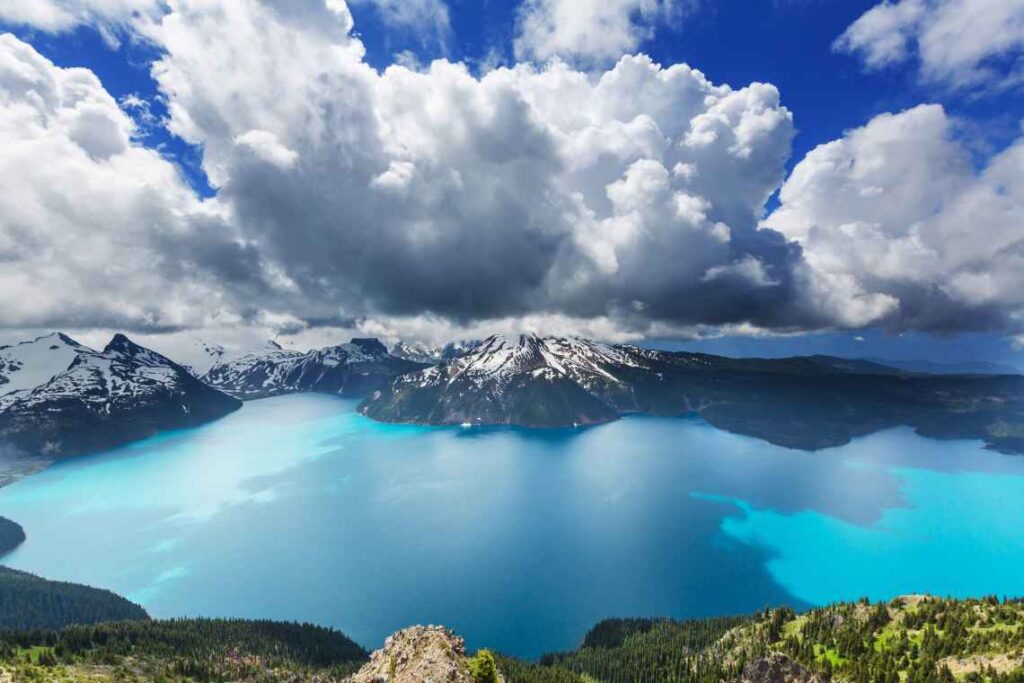
Lake Superior
The largest of the Great Lakes, Lake Superior runs along the southeast portion of Ontario, cut in half by the US-Canada border. It’s the largest freshwater lake by surface area in the world, and a popular place for fishing, boating and other water activities. You can also go hiking in the woods surrounding the lake, or simply go for a scenic drive on Highway 17 that runs along parts of the lake shore on the Canadian side.
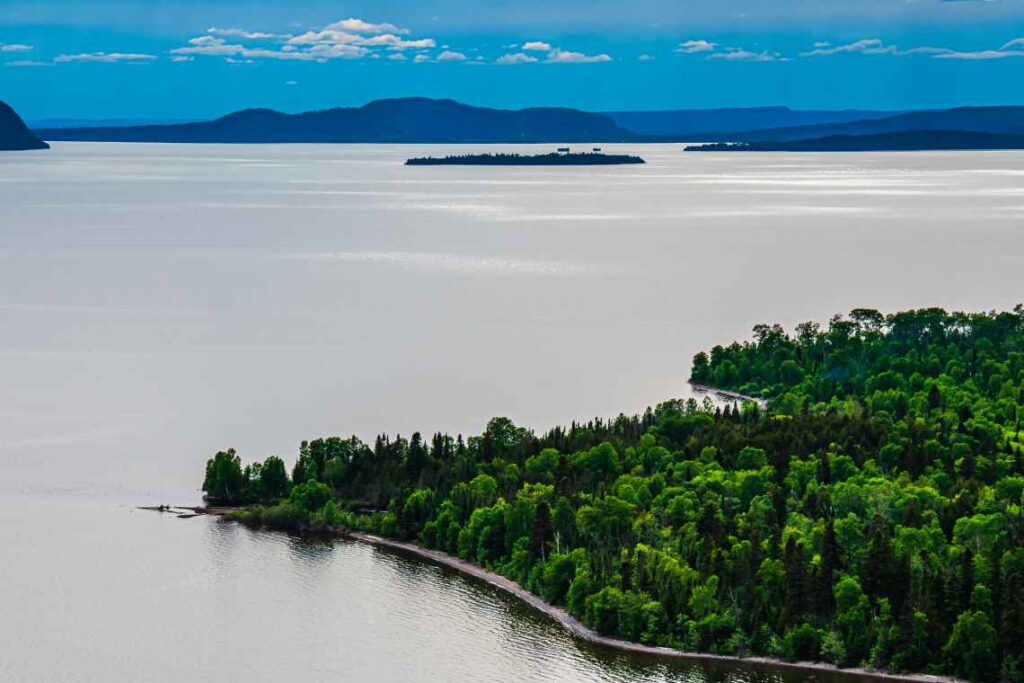
Berg Lake
Berg Lake is located in Mount Robson Provincial Park in British Columbia, and is reachable only by hiking the Berg Lake Trail. You need to have a reservation and pass to use this back-country hiking trail that runs for 23 kilometers (14.3 miles) to Berg Lake, a blue-tinted body of water sitting in the shadow of Mount Robson. Along the way there you’ll enter the Valley of a Thousand Falls that are fed by glaciers. There are campsites along the trail, as well as at the lake, and it’s recommended to stay at one of these and do some day hikes to enjoy the scenery.

Kluane Lake
We’re heading north to the Yukon to this long, thin lake near the Kluane National Park and Reserve. At the largest lake in the Yukon, you’ll find crystal clear water coming from nearby glaciers and rocky beaches, along with some opportunities to spot wildlife. There are trails and campgrounds around and near the lake, or you can easily access it via Highway 1, aka the Alaska Highway.
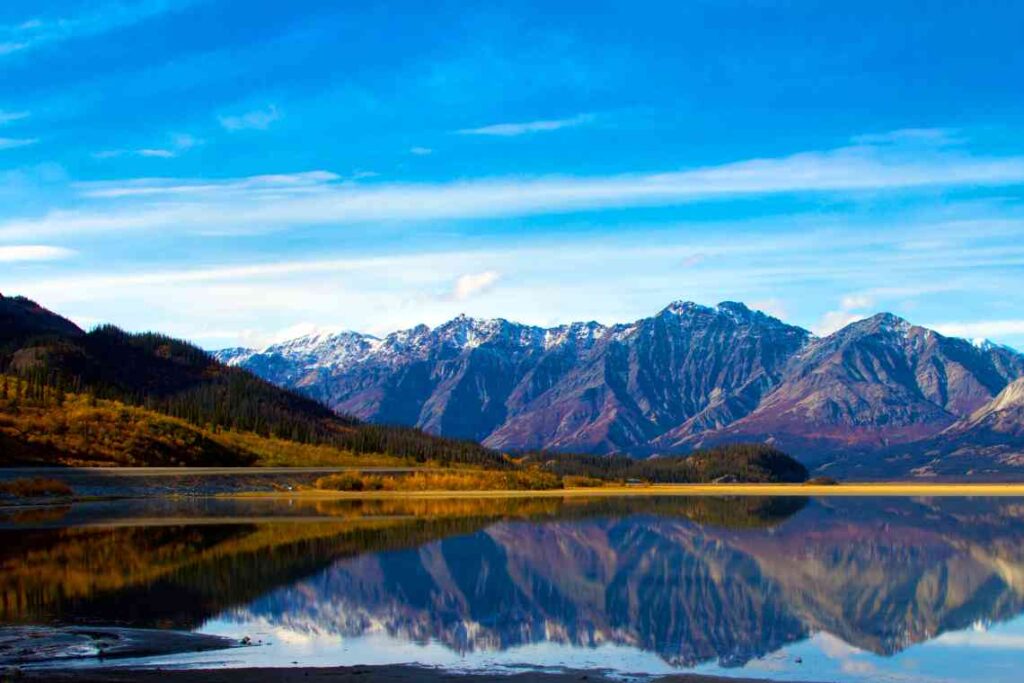
Spotted Lake
For something completely different, visit Spotted Lake in southern British Columbia, just over the border from Washington state. The lake is not one you visit for swimming, but rather to see the “spots” made by mineral deposits. You can see these deposits when the lake water dries up in the summer, but only from afar as there is a fence around it. It is a sacred site for the Syilx Okanagan Nation of the First Nations of Canada, which purchased the land the lake is on in 2001 from a private landowner.
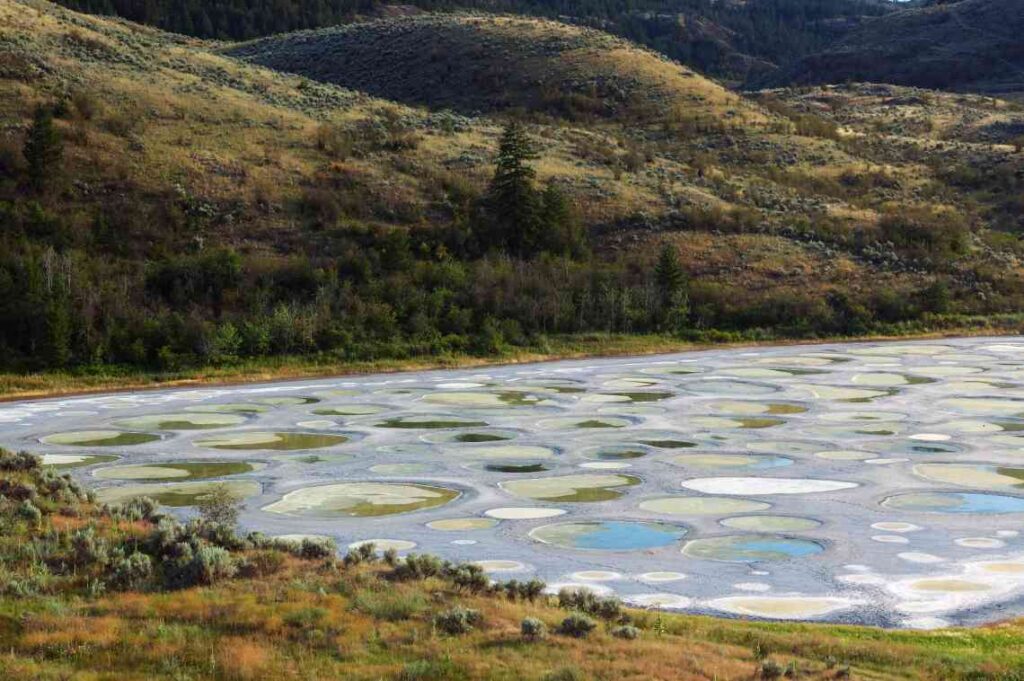
Lake Louise
The area around Lake Louise, located in Alberta near a town of the same name in Banff National Park, is popular all year. In summer you can go hiking around the lake and in Banff, and in winter you can go skiing at the nearby Lake Louise Ski Resort. You can stay at a hotel on the lake, or camp in the nearby wilderness. One of the most popular things to do here is to hike from Lake Louise to the Lake Agnes Tea House for great views of the lakes and surrounding mountains.
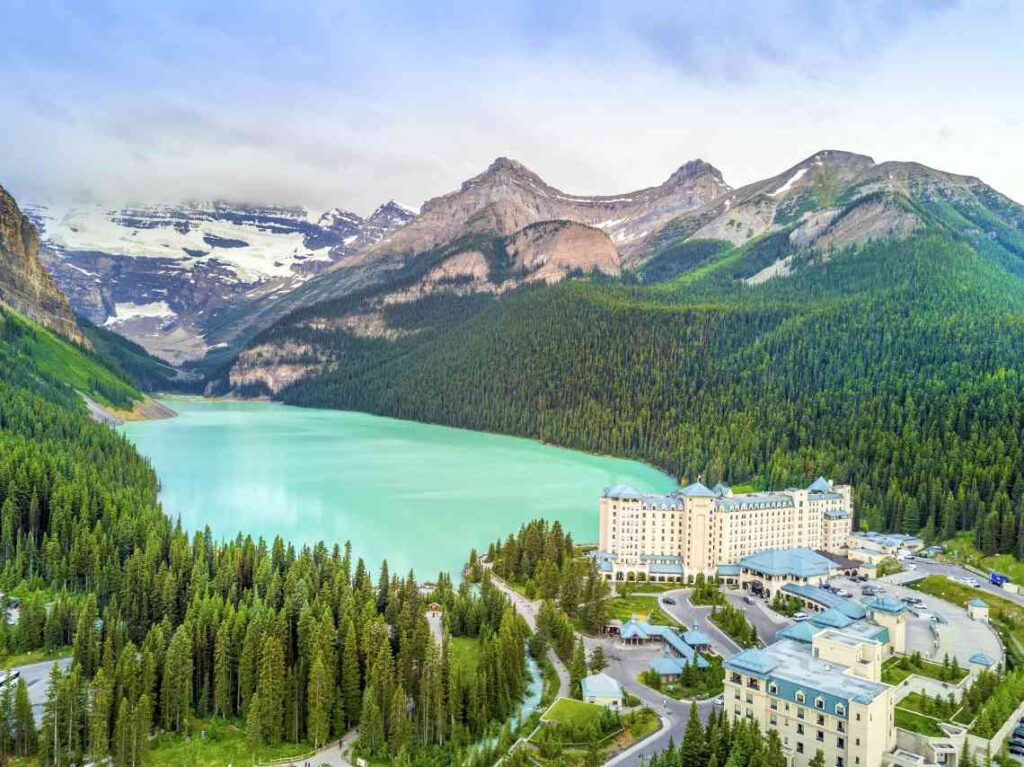
Lake Ontario
For a mix of urban flair and nature, head to Lake Ontario, the smallest of the Great Lakes. Along its shores you will find Toronto and its suburbs, but there are also interesting islands along the eastern end of the lake if you need some quiet time. If you’re up for a side trip while visiting Lake Ontario, go to the southern shore on the Canadian side and visit Niagara Falls.
